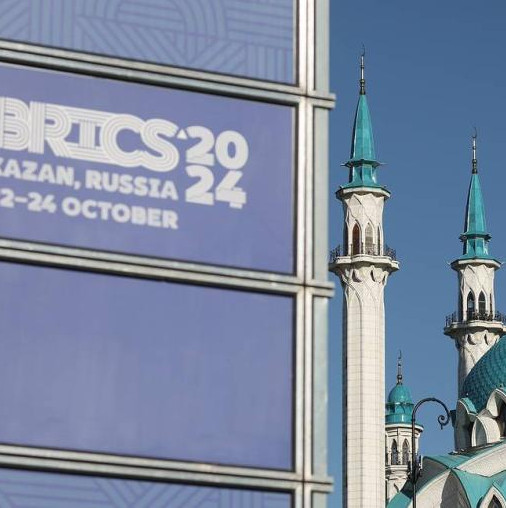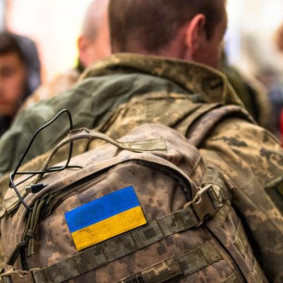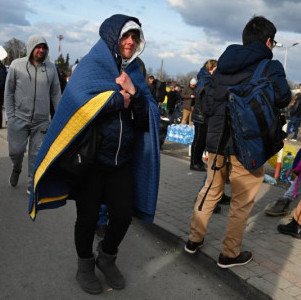The question in the title of the article stands in the same line with questions: “How to feed the starvelings?” and “How to cope with the AIDS?”. Neither politicians, nor scientists know the answers. There is a reality that exists despite our attitude to it: there are 5000 ethnic groups and about 100 conflicts directly associated with the national-religious strife per 200 countries. By the way, these statistics do not relate to huge areas not to say continents – what do we know about tribal wars of the Fualas with Malinkes in Guinea?
More than 70 of 100 conflicts are as old as centuries, they may fade, aggravate, transit into other less studied forms, for instance, into the same “archaic” form – intertribal conflicts, or more “modern” form - interelite conflicts or the most urgent form as of today - “forcedly pacified” conflicts. At least one of the parties in 70 of the same 100 conflicts is represented by the Islamic community.
And here is the first conclusion. There is no need to be in a hurry either now or at all. The scientists differentiating the conflicts represent to a great extent the European Christian civilization, therefore they look at the events at a predetermined angle. It follows herefrom - “we” are “peaceful people”, and “they” are “brawlers”. I wonder what these or other “brawlers” will speak about us as they enrich our “methods” with their vision.
The medicine underwent long-term evolution from the deterrence of devilry up to the computation of pharmaceutical dozes. By historical analogy, the modern conflict management science experiences the epoch of plague epidemics in the feudal centuries. So, the modern science may offer only the respective level of “diagnostics” and “therapy”.
The separatism from the times of national identity rise is a key catalyst of the majority of wars. It is a striving to individualization realized by the majority of the given ethnic group through establishment of its own power authorities. By the XX century, the public conscience was quite satisfied with two principles of state structure – territorial integrity (preference to “the ours”) and right of nations to self-determination (for ”the aliens”)
As the weapons developed and wars became more severe, the civilized (by that time) mankind faced a challenge to provide minimum law and order – at least to prevent “the spontaneous wars” from hindering “the scheduled wars”. It was the time, when the international legal principle of prevailing integrity of the state versus the right to leave the state was accepted. The separatism passed from the undoubtful Divine Providence to a category of “acts of evil”. Alack! The source of separatism, dissatisfaction of a majority of one geographically and culturally isolated ethnic group with its political status, remained the same even when it was snapped at by awesome monarchs and “iron” chancellors.
Having mentioned the source, let’s discuss its “components”. The classical science says that there are three of them – the economy, mythology and politics. It is well-known that at any war somebody “lacks sandwiches” while others who do not want to share the sandwiches, have them in excess. The second conclusion follows herefrom - there is no need to equate the separatists with knowingly weak and poor people. The Sudeten Germans in 1938 and Ulster Protestants today are much wealthier than their neighbors.
The contradictory nature of the separatism devaluates to a great extent a unique principle developed in the early XIX by our compatriot Prnce Borschagovsky. Being a recognized specialist in international relations and separatism in particular, he proposed “to use the practice of property acquisitions to satisfy the people unsatisfied with their status” . By the way, the principle of economic compensation that consists in the need to RAISE (but not to simply LEVEL) the majority and minority to the level of rich people remains a key for the settlement of national contradictions. The aforesaid words in block letters mean the imperatives that were ignored in particular by Marshal Tito who “leveled” rich Serbs with poor Albanians that later resulted in the demographic bias. But even if due to any “Martian” fund we succeed in satisfying everybody, it would be too early to close “the file of separatism”.
The conflict analysts are not in a hurry to write off the stereotypes of alien national culture perception that just settled in our mind. Let’s only recollect a proverb about an unexpected guest or a verb derived from noun “gypsy”. Mythological representations are even more difficult to be rectified than the material ones. But luckily they can be. To this end, a “high-profile” case or event that breaks accustomed image of “the alien” is needed.
According to French ethnopsychologists, the image of “bloodthirsty Russian Kazak” that was alive in the mind of their compatriots until 1813, was “erased” despite the logic of the time by abandonment of the Russian commander of the allied artillery to fire on Paris. The second rather difficult method of national stereotype change is to provide “a rest” from permanent communication with each other. Unfortunately, the methods that may be recommended to a brawling married couple will not be accepted by a politician who lives in the present time.
So, here is the politics organically associated with striving to the power. Without discrimination of used means, without looking back to the past and without looking forward to the future. There is no better way to prove oneself as a hero than to head “a liberation movement” or “to save the motherland”. The situation becomes more complex when the up-to-the-minute opportunities are mixed with “a super valuable” messianic idea. It does not matter, who is its originator – one of the parties of the conflict or any third party. This idea may have its origin in the tables of primogenitors proving that the monkey that gave birth to generation of the expelled people was better than its fellows and therefore the expelled are to be assisted.
The events in the Balkans showed that the messianic idea may be implemented in “conciliation” by using the “high-accuracy” weapons. There is only one result – the conflict limited in any case with two parties inevitably expands to other parties. The peace-makers are not always guided by Gospel of Matthew: “Blessed are the peacemakers, for they will be called children of God.” Just as the conflict analyst is interested in a fee, so the peacemaker also expects to make money. What’s to be done? To abandon the peacemaking?
The third conclusion follows herefrom - intervention of any mediators in the conflict may be justified provided the parties of the conflict agree with such intervention voluntarily. In this connection, we see another condition of conciliation. It is the credibility of mediators in the eyes of conflicting parties, and their unselfishness at least in the fiscal sense. Let’s call a spade a spade – the current relative conciliation in former Yugoslavia is better that the yesterday’s scuffle, but it gives no guarantees for tomorrow. The problem of separatism “is hidden” behind the bayonets of the peacemakers, and nobody knows what will happen when the line of these bayonets becomes rarer.
The fourth “most useful” conclusion follows herefrom - the separatism should be treated but as we still lack the proper tools (Feudalism!) it is better to recollect a principle of the medicine developed as far back as the Middle Ages: “Do no harm...”









